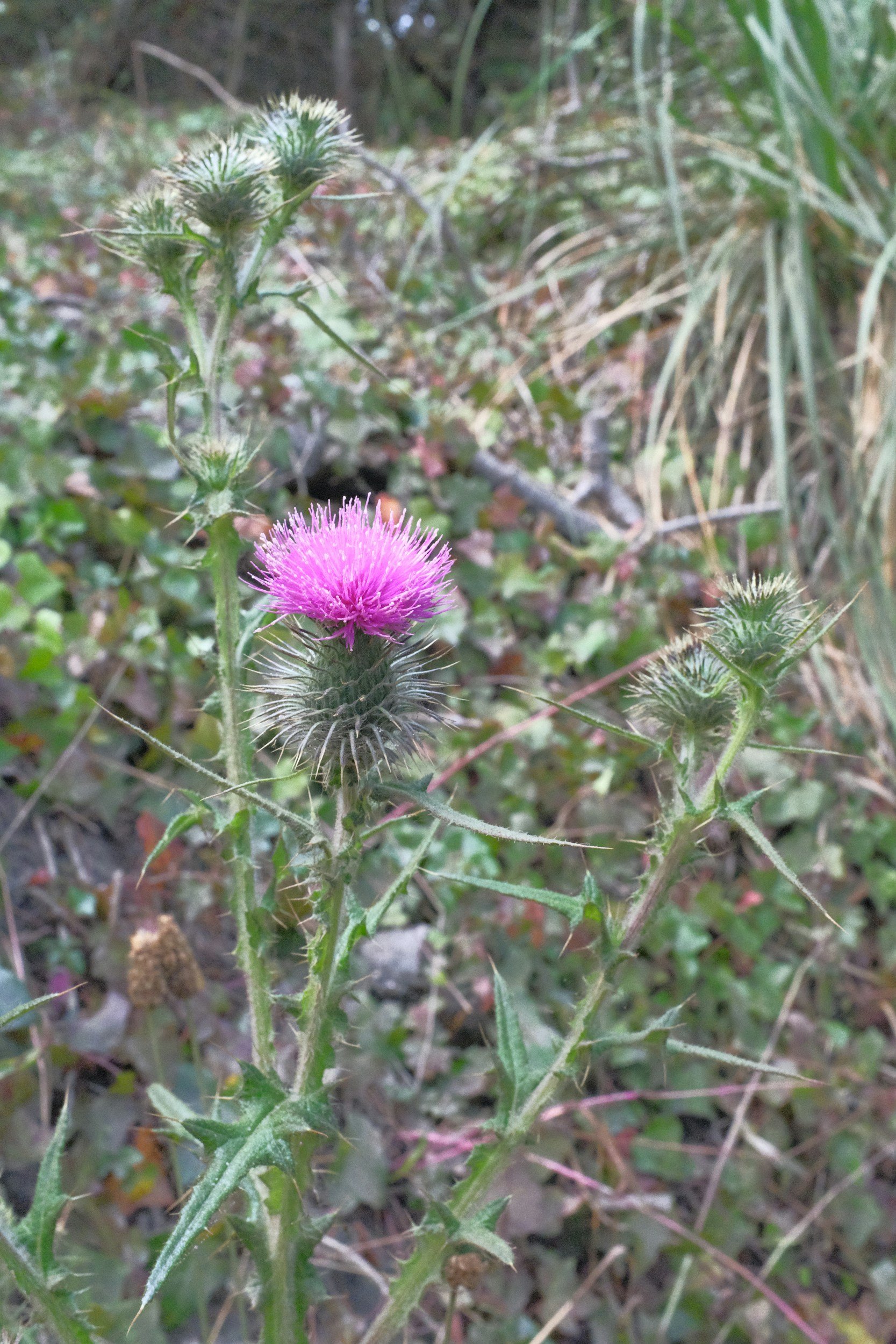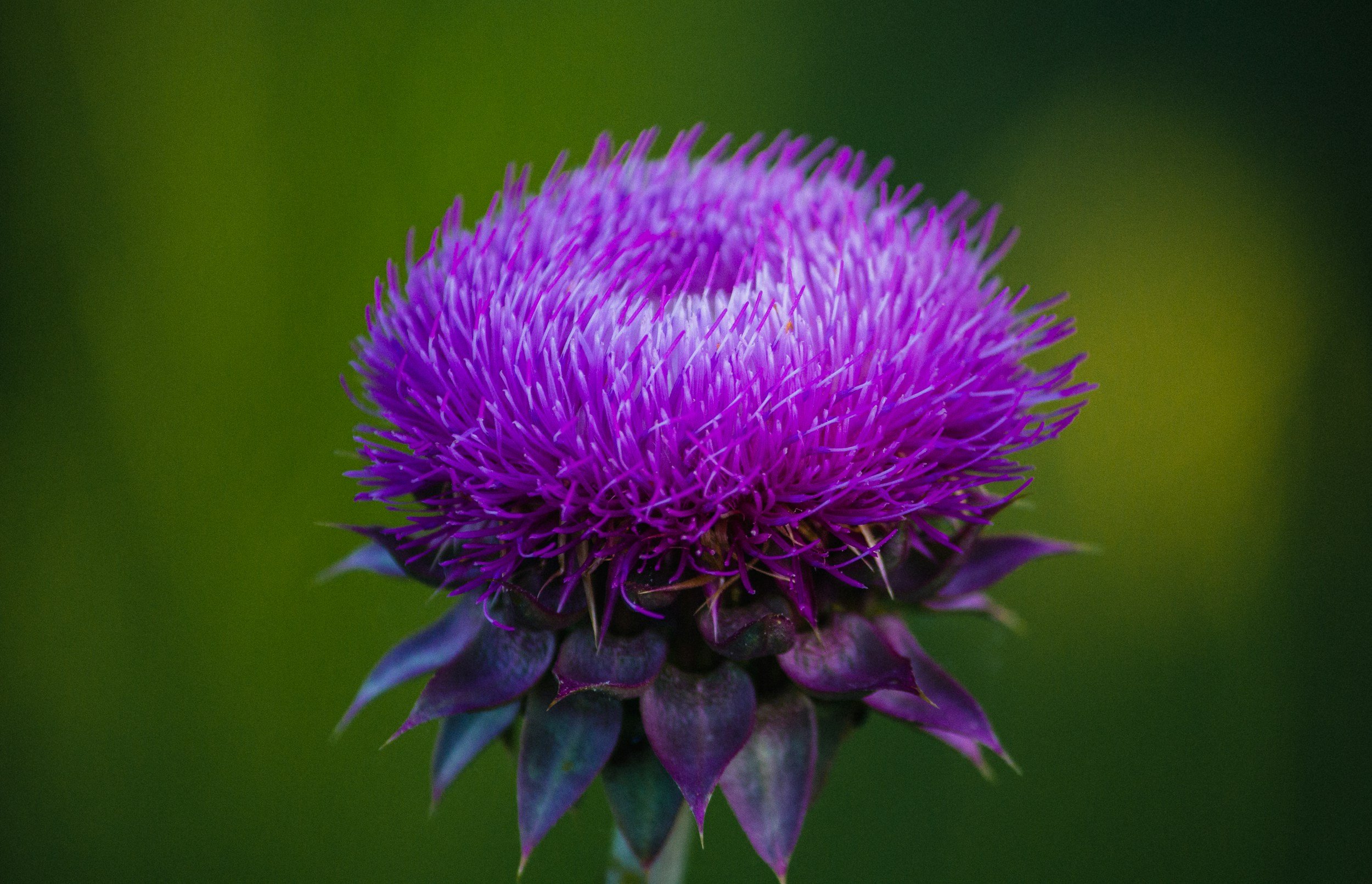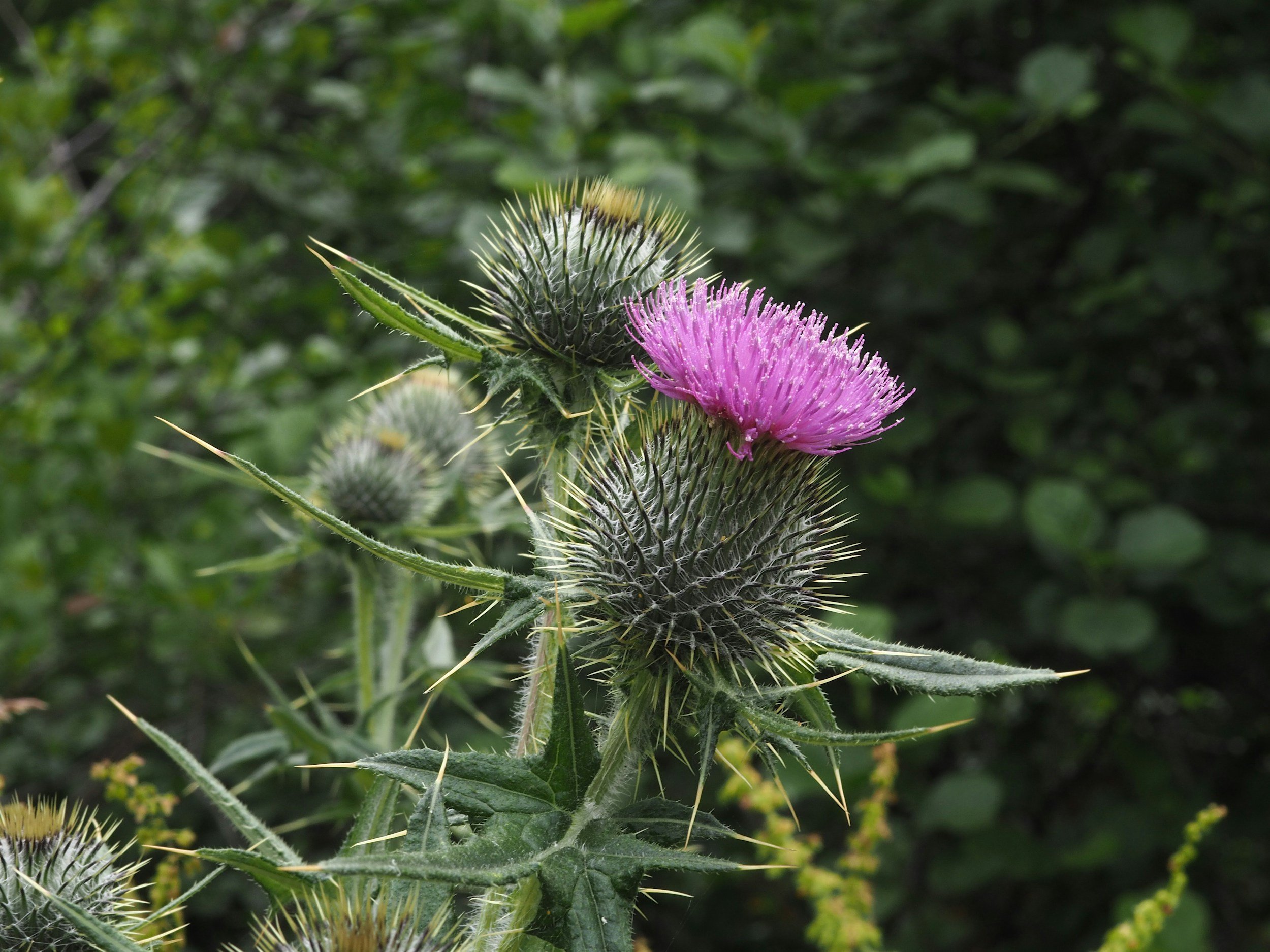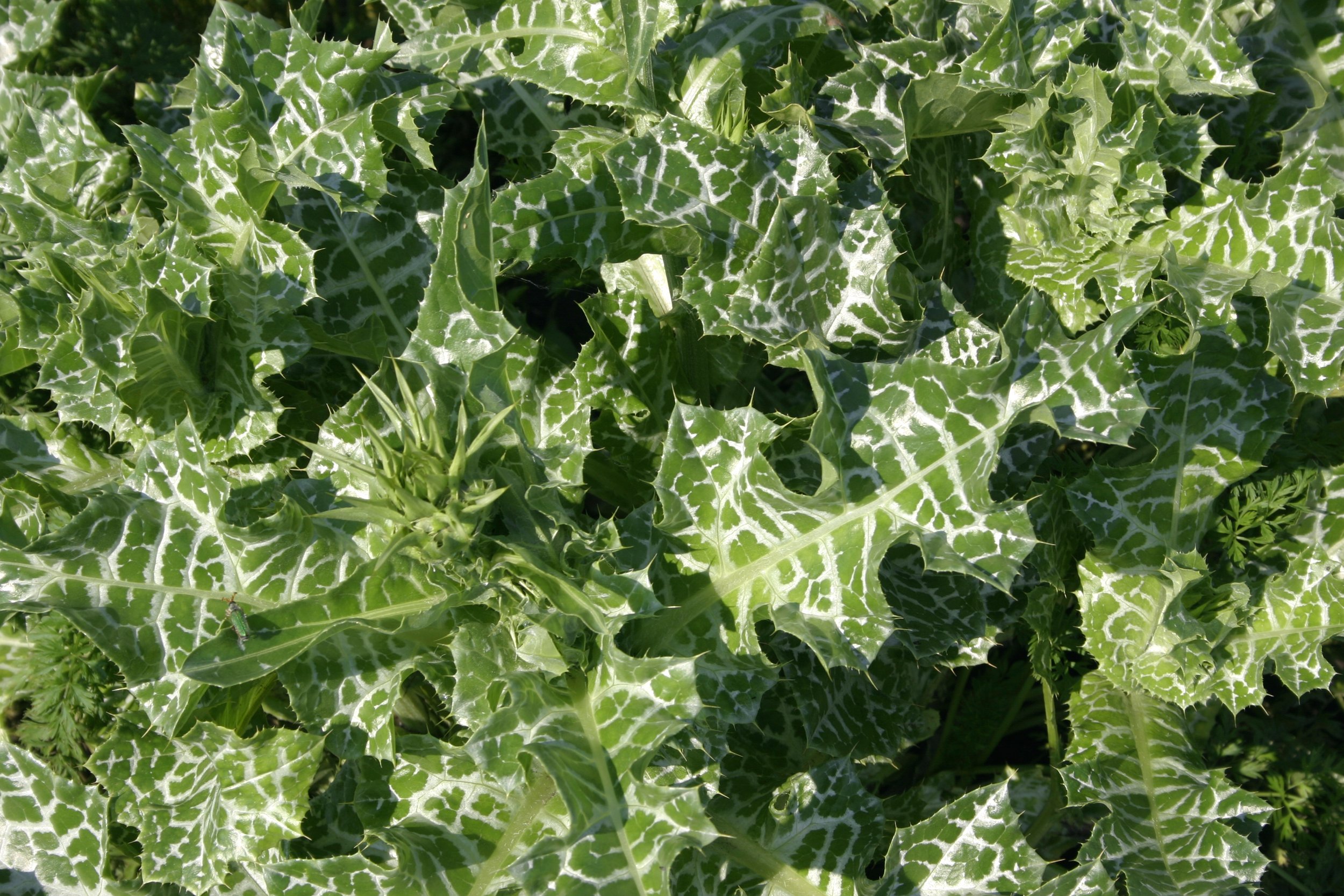
Milk Thistle
Milk Thistle (Silybum marianum)
Plant family
Asteraceae
Other significant names
Marian’s thistle
Mary’s thistle
Parts used
Seed (Semen)
Typical forms of prescription
Tincture
Powdered seed
Note on Extraction:
Silymarin is not water-soluble, so tinctures and capsules are preferred over infusions for therapeutic use. Standardised extracts (70–80% silymarin) are often used in clinical settings.
Milk Thistle (Silybum marianum) – Clinical Snapshot
Primary Actions
Demulcent
Antidepressant
Anti-inflammatory
Hepatoprotective
Hepatic trophorestorative (restores liver function)
Antioxidant
Galactagogue (promotes lactation)
Bitter tonic
Primary Indications
Jaundice
Chronic hepatitis
Cirrhosis
Alcoholism support
Diabetes
High cholesterol
Gallstones
Depression
Skin conditions
Chemotherapy support
⚠️Cautions / Safety⚠️
No known side effects when used properly
Important: Should be organically grown. Plants can absorb high levels of nitrate fertilisers, leading to potential poisoning
Herbs with liver actions should be used with caution alongside other medications (risk of drug overload or faster drug clearance)
Caution in individuals with allergies to the Asteraceae family
Silybum marianum
Phytochemistry and Pharmacology
Flavonolignans
Main complex: Silymarin (includes silybin, silydianin, silychristin)
Action: Hepatoprotective, antioxidant, anti-inflammatory, regenerative
Use: Silymarin is the signature active compound in milk thistle, providing strong protective and regenerative effects on liver cells. It stabilises liver cell membranes, enhances glutathione production, and supports the detoxification of alcohol, drugs, and environmental toxins. Silymarin also has anti-inflammatory and mild antifibrotic activity, making it useful in hepatitis, fatty liver, cirrhosis, and general liver support.
Flavonoids
Includes: Taxifolin, quercetin, kaempferol
Action: Antioxidant, anti-inflammatory, vascular-protective
Use: These support milk thistle’s systemic antioxidant effects, help reduce inflammation, and improve capillary stability, reinforcing its role in detoxification, skin health, and vascular protection.
Fixed Oils (from seeds)
Includes: Linoleic acid, oleic acid
Action: Nutrient-rich, anti-inflammatory
Use: The seed’s oil contains essential fatty acids, which nourish the body and support cell membrane health. These oils provide anti-inflammatory support and make milk thistle seed preparations nutritive and medicinal.
Tocopherols (Vitamin E compounds)
Action: Antioxidant, tissue-protective
Use: These naturally occurring antioxidants protect lipid membranes from damage and contribute to milk thistle’s use in chronic inflammatory and degenerative conditions.
Traditional use
Milk thistle has been used for over 2,000 years, with its medicinal use documented by Ancient Greek physicians, who prepared it as a tea to treat venomous snake bites. Traditional European herbalists employed milk thistle to address liver and spleen obstructions, jaundice, and gallstones, recognising its role in blood purification and bile stimulation. The plant’s striking white-mottled leaves were once thought to be touched by the Virgin Mary’s milk, giving rise to both its Latin and common names and connecting it symbolically to nourishment and protection.
Clinical discussion
Milk thistle’s key active constituents are flavonolignans, notably silymarin and silybin, concentrated in the seeds. These compounds have been extensively researched for their hepatoprotective (liver-protective) properties. Silymarin is known to:
Stabilise liver cell membranes
Promote liver regeneration
Reduce inflammation and fibrosis
Protect against liver toxins (e.g., from alcohol, medications, and even Amanita mushroom poisoning)
Herbalists use milk thistle to support liver detoxification, especially when poor liver function manifests as skin conditions (e.g., eczema, acne), digestive issues, hormonal imbalances, or low mood—all of which may result from impaired elimination of metabolic waste or hormone processing.
Other indications include:
Cirrhosis or fatty liver
Post-viral hepatitis recovery
High cholesterol
Alcohol-related liver damage
In these cases, non-alcoholic preparations (such as capsules or powders) may be preferred, especially in alcohol recovery protocols.
Milk thistle also has traditional use as a galactagogue, helping to increase milk production in breastfeeding mothers, though more evidence is needed to confirm this clinically.
The seeds are mildly bitter with a nutty flavour, making them easy to integrate into daily routines. They can be:
Ground fresh and added to food (approx. ½ tsp per serving)
Used in capsules, infusions, or decoctions
Processed into tinctures (preferably alcohol-free in sensitive cases)
Cultivation/harvesting
Milk thistle is a striking biennial or annual with dramatic purple flowers and spiny leaves. It prefers full sun, well-drained soil, and grows well in both cultivated beds and wilder settings, though it can become invasive if left unchecked.
Sow seeds in early spring directly into the soil or pots. Plants are hardy but slug-prone, especially when young. Protect seedlings carefully.
Allow plants to flower and set seed. When seed heads begin to dry and turn brown, it’s time to harvest.
Wear gloves when handling mature plants, as the sharp spines on the flower heads can easily irritate skin.
Cut and dry the seed heads, then thresh or shake out the seeds once fully dry. Store in airtight jars away from heat and light.
Milk thistle self-seeds easily, so you may enjoy a long-term stand once established, but monitor its spread if growing near wild areas.
Key Botanical Features of Milk Thistle (Silybum marianum)
Growth
Type: Biennial or annual herbaceous plant.
Size: Grows 1–2 meters (3–6.5 feet) tall.
Stem: Erect, stout, and branched, sometimes with a reddish tint.
Leaves
Type: Simple, alternate.
Shape: Deeply lobed and spiny, with irregular edges.
Size: Up to 60 cm (24 inches) long.
Margins: Sharp, spiny teeth.
Texture: Glossy and slightly waxy.
Colour: Green with prominent white veins, creating a marbled appearance.
Flowers
Type: Thistle-like, composite flower heads, characteristic of the Asteraceae family.
Size: 4–5 cm (1.5–2 inches) in diameter.
Colour: Bright purple to magenta.
Flower Arrangement: Solitary capitula (flower heads) on the tips of branches.
Blooming Period: Late spring to summer (May–August).
Pollination: Attracts bees, butterflies, and other pollinators.
Fruits & Seeds
Fruit Type: Achene (dry, one-seated fruit) with a feathery pappus (parachute-like structure).
Size: 6–7 mm (0.2–0.3 inches) long.
Colour: Dark brown to black, with a shiny surface.
Dispersal: Primarily by wind and animals.
Roots
Type: Strong taproot.
Function: Helps access deep soil nutrients and water, making it drought-resistant.
Habitat & Growth Conditions
Climate: Prefers temperate to warm climates, tolerating dry conditions.
Soil: Thrives in well-drained, nutrient-poor, sandy or loamy soils.
Sunlight: Prefers full sun.
Water Requirements: Drought-tolerant, but grows best with moderate moisture.
Distribution: Native to the Mediterranean region, but widely naturalised in North America, Australia, and other temperate regions.
Sustainability/conservation
Least concern.





Sources
Bartram, T. (1998). Bartram’s Encyclopedia of Herbal Medicine. Constable.
Fisher, C. (2009). Materia Medica of Western Herbs, (2018 edition). Finchley Road, London. Aeon Books.
Hedley, C & Shaw, N. (2020). A herbal book of making and taking. Finchley Road, London. Aeon Books.
Hoffmann, D. (2003). Medical Herbalism: The Science and Practice of Herbal Medicine. Healing Arts Press.
McIntyre, A. (2019). The complete herbal tutor, revised and expanded edition. Finchley Road, London. Aeon Books.
Plants of the World Online | Kew Science. (n.d.). Plants of the World Online. https://powo.science.kew.org/
Disclaimer: This page is for educational purposes only. Consult a qualified medical herbalist before using herbs, especially during pregnancy, when trying to conceive, while breastfeeding, for medical conditions, or with children.
Read the full disclaimer → Medical Disclaimer.





